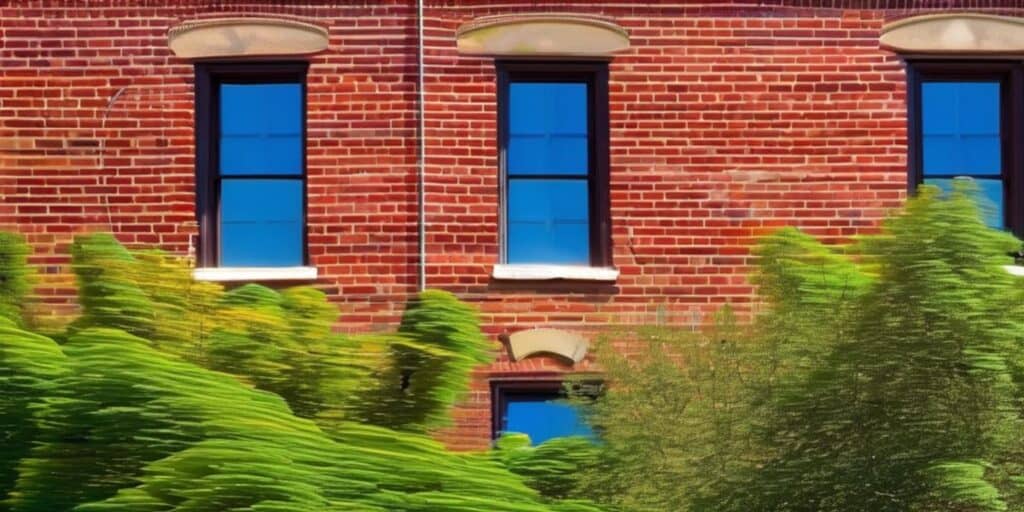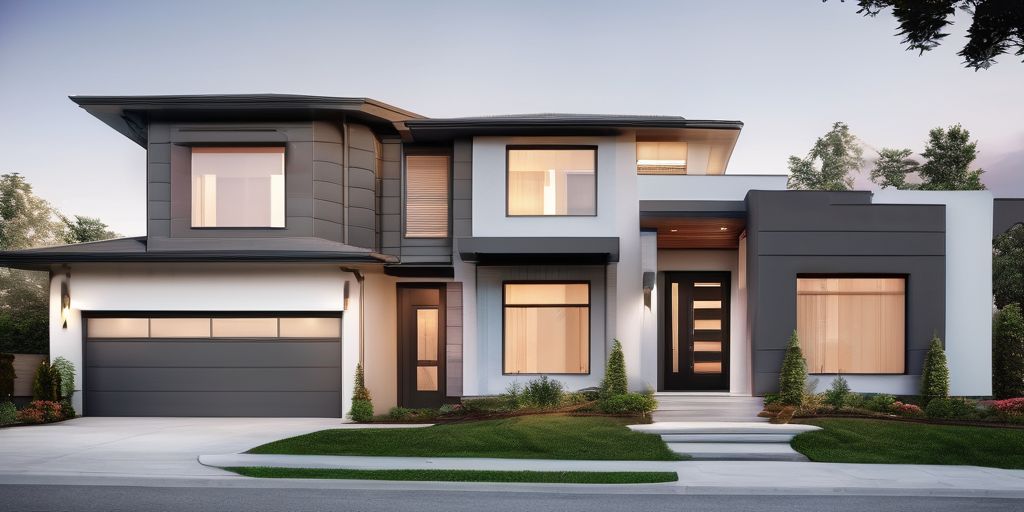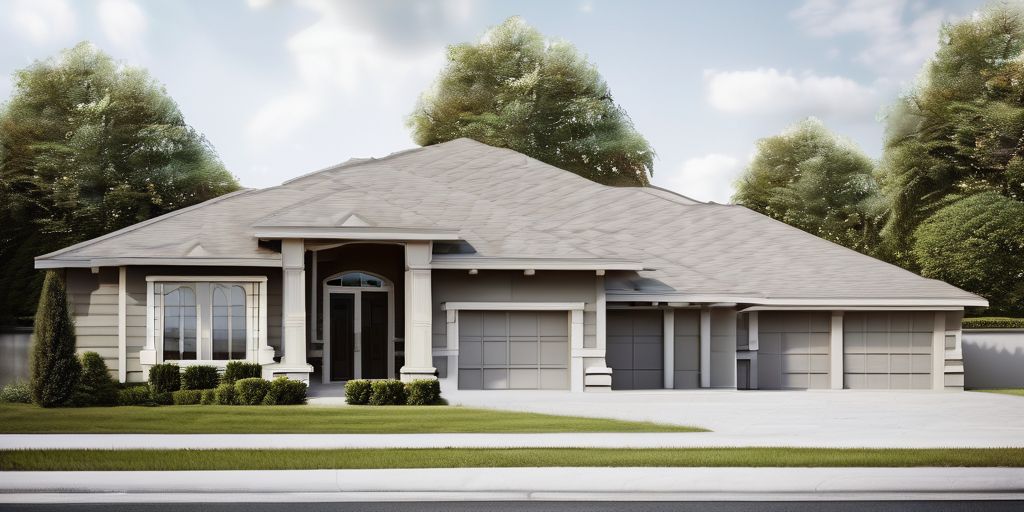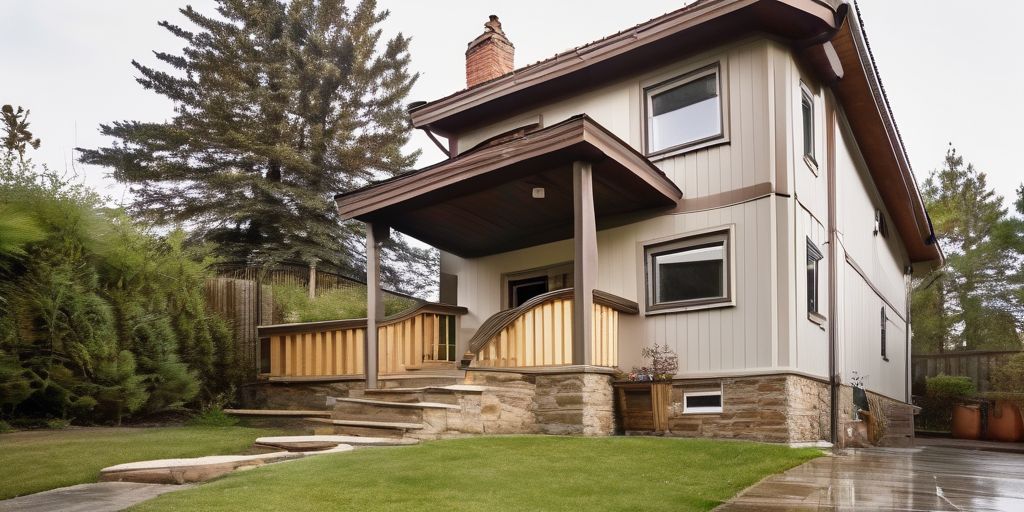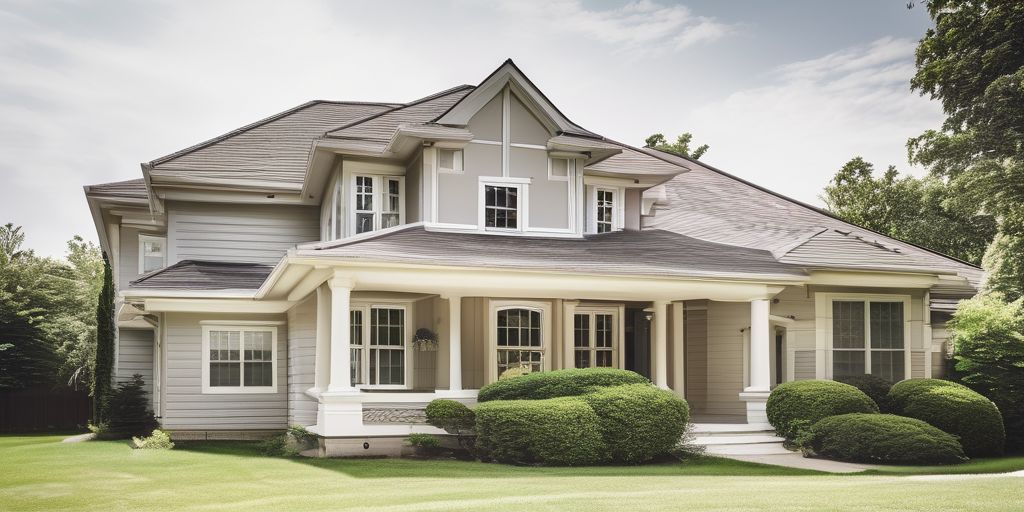Brick painting in Brantford is a task that requires careful consideration of the unique challenges posed by seasonal temperature variations. From the sweltering heat of summer to the biting cold of winter, each season presents its own set of obstacles for painters. This article delves into understanding the impact of these changes, selecting appropriate paints and tools, providing step-by-step guides for each season, maintaining painted brickwork, and incorporating local expert advice to ensure a successful and enduring paint job on brick surfaces throughout the year.
Key Takeaways
- Seasonal temperature fluctuations in Brantford significantly impact paint adhesion, necessitating specialized preparation and application techniques for brick painting.
- Choosing the right paint and tools is crucial for each season, with options available for heat-resistant paints in summer and cold-weather solutions for winter.
- Step-by-step guides tailored to each season’s conditions can help painters effectively manage the challenges of summer heat, autumn cool, winter chill, and spring mildness.
- Ongoing maintenance, including regular check-ups and the use of sealants, is essential for preserving the integrity and appearance of painted brickwork through Brantford’s diverse seasons.
- Local insights from Brantford painting experts can provide valuable, region-specific advice and resources, ensuring optimal outcomes for seasonal brick painting projects.
Understanding the Impact of Seasonal Changes on Brick Painting
The Science of Paint Adhesion in Varying Temperatures
The success of a brick painting project hinges on the paint’s ability to adhere to the brick surface, which is significantly influenced by temperature. Understanding the impact of seasonal temperatures on paint adhesion is essential for achieving a durable and visually appealing finish. Here are some key considerations:
- Temperature Range: Paints have optimal temperature ranges for application. If the temperature is too low, the paint may not cure properly, leading to poor adhesion. Conversely, high temperatures can cause the paint to dry too quickly, potentially leading to cracks or an uneven finish.
- Moisture Levels: Seasonal humidity and precipitation can affect paint adhesion. In high humidity, paint may take longer to dry, while too little moisture in the air can cause it to dry too rapidly.
- Surface Preparation: The brick surface must be clean and dry before painting. Seasonal weather can introduce challenges such as frost, dew, or pollen, all of which must be managed to ensure proper paint adhesion.
It’s important to adjust your painting practices to the seasonal conditions to ensure the best possible outcome for your brick painting project.
When considering the Brantford area, one must take into account the local climate’s impact on these factors. For instance, the proximity to bodies of water like the Grand River can influence local humidity levels, affecting how paint adheres to brick surfaces.
Seasonal Challenges: From Sweltering Summers to Freezing Winters
Brick painting in Brantford is a task that must be carefully timed and executed to account for the wide range of temperatures experienced throughout the year. The quality of your paint job can be significantly affected by the temperature at the time of application.
Temperature fluctuations can lead to a host of issues:
- High temperatures can cause paint to dry too quickly, leading to an uneven finish.
- Low temperatures may prevent paint from setting properly, resulting in poor adhesion and potential cracking.
- Humidity levels also play a critical role, as too much moisture in the air can prevent paint from curing correctly.
It’s essential to monitor the weather forecast and plan your painting project accordingly to ensure optimal conditions for paint application and drying.
In Brantford, where the local mean temperature has been on the rise, the window for painting is shifting. This requires painters to adapt more quickly to the changing conditions to achieve long-lasting results. Understanding the local climate trends is crucial for scheduling your painting projects to avoid the extremes of sweltering summers and freezing winters.
Prepping Bricks for Paint: Seasonal Best Practices
When preparing to paint bricks, it’s crucial to consider the seasonal conditions to ensure a durable finish. Proper preparation and timing are key to successful brick painting. Here are some best practices for each season:
- Spring and Fall: These seasons typically offer the ideal painting conditions. Aim to paint when temperatures are between 10-30\u00B0C, with low humidity. Ensure there’s no rain forecasted for at least 24 hours and that the wind is calm.
- Summer: High temperatures can cause paint to dry too quickly, leading to poor adhesion. Paint during the cooler parts of the day and look for shade to work in.
- Winter: Painting in cold weather can be challenging. If necessary, use paints formulated for lower temperatures and avoid painting on days when frost or ice is present.
Before starting your project, consult with experts to select the appropriate type of paint, color, and application techniques. Always prep the surface thoroughly by cleaning and repairing any damage to the bricks. Choosing the right paint and considering the weather will contribute to a long-lasting and aesthetically pleasing finish.
Remember, the success of your brick painting project is heavily influenced by the weather conditions. Plan accordingly and don’t rush the process.
Choosing the Right Paint and Tools for Each Season
Summer Selections: Heat-Resistant Paints and Equipment
When painting bricks in the summer, it’s essential to choose products that can withstand the high temperatures. Selecting the right paint is crucial, as it needs to resist fading and peeling in the heat. Here are some key considerations for summer brick painting:
- Heat Resistance: Paints with high heat resistance will maintain their integrity and color despite the sun’s intensity.
- Drying Time: Summer’s warmth accelerates drying, so opt for paints with appropriate drying times to avoid premature peeling.
- Application Method: Brushes and rollers should be of materials that don’t degrade in high temperatures.
In addition to paint, the right tools are necessary for a successful summer paint job. Metal tools can become too hot to handle, and plastic may warp. Therefore, it’s important to have tools with heat-resistant handles and features.
Remember, the goal is to achieve a durable and aesthetically pleasing finish that will last through the summer and beyond.
For those painting in areas like Brantford, where the summer sun can be relentless, consider the orientation of your building. Surfaces that receive direct sunlight will require paints with higher UV protection. Lastly, always ensure proper hydration and sun protection for the painters themselves, as the summer heat can pose health risks.
Winter Wonders: Cold-Weather Painting Solutions
When the temperature drops, painting brickwork in Brantford requires special consideration to ensure the paint adheres properly and withstands the cold. Choosing paint for Brantford’s diverse climate is crucial. Consider factors such as the paint’s sheen for durability, and color for aesthetics, as well as longevity. Local style and personal preference also play a significant role in the selection process.
Surface preparation is key in cold weather. The brick must be clean and dry before painting. Here’s a simple checklist to follow:
- Inspect the brickwork for damage or moisture issues
- Repair any cracks or chips
- Clean the surface thoroughly to remove dirt and efflorescence
- Allow the brick to dry completely
In addition to surface prep, it’s important to use the right tools. Brushes and rollers designed for low temperatures help ensure smooth application and better coverage. Remember, the paint needs to cure before the temperature dips below freezing again.
When painting in winter, timing is everything. Aim for a dry, relatively warm day within the cold season to start your project.
Lastly, consider the timing of your painting project. Paint needs time to dry and cure, which can be challenging during Brantford’s colder months. Monitor the weather forecast and choose a day that offers the best conditions within the constraints of winter.
Tool Time: Adapting Your Toolkit for Seasonal Success
When painting bricks in Brantford, it’s essential to adapt your toolkit to the season at hand. The right tools can make a significant difference in the efficiency and quality of your work. For instance, during the colder months, you’ll want to ensure that your brushes and rollers don’t become too stiff, which can affect paint application. Conversely, in the summer, tools that can withstand high temperatures are crucial to prevent paint from drying too quickly on the brush or roller.
Adapting your toolkit isn’t just about the tools themselves, but also about the materials you use with them. Here’s a quick list to consider for each season:
- Summer: Synthetic bristle brushes, paint extenders to slow drying time
- Autumn: Moisture-resistant drop cloths, flexible putty knives
- Winter: Thicker rollers to apply heavier coats, portable heaters to maintain paint viscosity
- Spring: Mildew-resistant primers, lightweight ladders for easy maneuvering
Remember, the goal is to work with the temperature, not against it. Preparing your toolkit for the season’s challenges will help ensure a smooth and successful brick painting project.
While the focus is on the tools, don’t forget the importance of modern techniques for brick painting in Brantford’s contemporary settings. Enhance buildings’ aesthetic appeal with the right paint, preparation, application, and maintenance for long-lasting visual appeal.
Step-by-Step Guides for Seasonal Brick Painting
Summer Strategies: Beating the Heat While Painting
Painting brickwork during the summer months in Brantford can be challenging due to the high temperatures. However, with the right strategies, you can ensure a successful and durable paint job. Here are some tips to help you beat the heat:
- Start early in the day to take advantage of cooler morning temperatures. This not only makes the work more comfortable but also helps the paint to adhere better before the midday sun increases surface temperatures.
- Stay hydrated and take regular breaks to avoid heat exhaustion. Your health is as important as the task at hand.
- Use thin layers of paint to allow for quicker drying times and reduce the chances of blistering under the intense sun.
When painting in the heat, it’s crucial to monitor the temperature of the brick surface, not just the air temperature. A surface that’s too hot can cause the paint to dry too quickly, leading to poor adhesion and potential peeling.
- Schedule your painting sessions around the weather forecast, avoiding the hottest parts of the day.
- Consider the humidity levels, as high humidity can extend drying times and affect the finish.
By following these summer strategies, you can maintain a high standard of work despite the challenges posed by the season. Remember to always prioritize safety and the quality of your paint job.
Autumn Adjustments: Preparing for the Temperature Dip
As autumn arrives, the shift in weather calls for a strategic approach to brick painting. Brick surfaces require careful preparation to ensure paint adhesion during the cooler, more variable temperatures of fall. Here are some key steps to take:
- Clean the bricks thoroughly to remove any dirt, mildew, or debris that may have accumulated over the summer months.
- Repair any cracks or damage to the brickwork to prevent moisture from seeping in and compromising the paint job.
- Apply a suitable primer that can handle the lower temperatures and help the paint adhere better to the brick surface.
It’s also essential to monitor the weather forecast closely. Painting on a dry day with mild temperatures is ideal, as it allows the paint to cure properly. Remember, the temperature should stay above 10 C for at least 24 hours after application.
When selecting paint, opt for a formula that’s designed to withstand the temperature fluctuations typical of Brantford’s autumn. This will help maintain the durability and appearance of your brickwork.
Lastly, consider the timing of your project. With daylight hours decreasing, it’s important to plan your painting schedule to maximize natural light. Early morning starts can be less effective as dew and frost may be present.
Winter Workarounds: Painting in the Chill
Painting brickwork during the winter months in Brantford presents unique challenges. The cold temperatures can affect both the application process and the drying time of the paint. Proper preparation and technique are essential to ensure a successful paint job in these conditions.
- Preparation: Ensure that the bricks are dry and free from ice or snow. Use a heat gun or a similar tool to thaw any frozen areas before painting.
- Paint Application: Apply paint during the warmest part of the day and avoid painting in direct wind which can cause the paint to dry unevenly.
- Drying Time: Allow extra time for the paint to dry. Cold weather can significantly extend the drying process.
When dealing with moisture challenges, it’s crucial to select a paint that can withstand the harsh winter conditions without peeling or cracking.
In addition to these steps, regular inspection and touch-ups are necessary to maintain the integrity of the paint through the varying weather conditions. Protective measures such as sealants can also enhance the durability of your brickwork.
Spring into Action: Capitalizing on Mild Weather
Spring offers an ideal climate for painting brickwork, with its typically mild temperatures and moderate humidity levels. This season is perfect for undertaking exterior painting projects, as the weather conditions contribute to optimal paint adhesion and drying times.
- Prepare the surface by cleaning the bricks thoroughly to remove any dirt, mildew, or efflorescence. This ensures a clean canvas for the new paint.
- Choose a day with clear weather, avoiding rainy or overly windy conditions that can affect the paint’s application and drying.
- Apply paint during the warmest part of the day when temperatures are steady, which helps in achieving a uniform finish.
Remember, the key to a successful paint job is not just the application but also allowing adequate time for the paint to cure.
In the Brantford area, landmarks like the Misner Dam can inspire your color choices, reflecting the natural beauty and heritage of the region. As you plan your project, consider the local environment and how your painted brick can complement it.
By following these simple steps and taking advantage of the spring weather, you can enhance your home’s exterior with the right paint and techniques, achieving a professional result with effective application and finishing touches.
Maintaining Your Brickwork Through the Seasons
Regular Check-Ups: Seasonal Maintenance Schedules
To ensure the longevity and aesthetic appeal of your painted brickwork, it’s essential to establish a routine maintenance schedule. Regular check-ups are not just about aesthetics; they are a crucial part of preserving the integrity of the paint and the underlying brick.
- Spring: Inspect for any damage from winter’s freeze-thaw cycles. Clean the bricks to remove any dirt or mold that may have accumulated.
- Summer: The high temperatures can cause paint to expand and contract. Check for any blistering or peeling paint, and ensure that your bricks are not exposed to excessive moisture.
- Autumn: Prepare for the colder months by checking for cracks or gaps in the paint that can allow moisture to seep in, potentially leading to damage during freezing conditions.
- Winter: Although it’s challenging to perform outdoor maintenance in the cold, it’s important to promptly address any damage caused by ice or snow accumulation.
By adhering to a seasonal maintenance schedule, you can address issues promptly, ensuring that your painted brickwork remains in top condition throughout the year.
For Brantford residents, incorporating local weather patterns into your maintenance plan is key. For example, the proximity to the Grand River may affect humidity levels, which in turn can impact paint adhesion and durability.
Repair and Touch-Ups: Keeping Your Paint Fresh
To ensure the longevity and aesthetic appeal of your painted brick surfaces, a proactive approach to maintenance is essential. Regular inspections, annual cleaning, and immediate repairs are key to maintaining the integrity of the paint. When cleaning, it’s important to use gentle methods and breathable paint to prevent damage and weathering effects.
- Inspect painted surfaces regularly for signs of peeling or chipping.
- Clean the brickwork annually with a soft brush and mild detergent.
- Address any damage promptly with suitable touch-up paint.
Protecting your painted brick from the elements is also crucial. Apply water-repellent coatings, UV blockers, and temperature-resistant paints to shield against weathering. Remember, the right maintenance can significantly extend the life of your paint job, ensuring that it remains vibrant and protective season after season.
By adhering to these maintenance practices, you can keep your painted brickwork in top condition, avoiding the need for frequent, costly overhauls.
Protective Measures: Sealants and Weatherproofing Tips
To ensure the longevity and aesthetic appeal of your painted brickwork, it’s important to apply protective treatments and sealants. These can range from water repellents that help prevent moisture penetration to UV blockers that reduce the fading caused by the sun’s rays. Additionally, anti-graffiti coatings can be a wise investment for urban areas, deterring vandalism and making cleanup easier.
Proactive maintenance is key to preserving the integrity of your brick painting. This includes regular inspections to catch any issues early and using eco-friendly cleaning methods to avoid damaging the paint. When it comes to painting, it’s advisable to choose times of mild weather, particularly in climates like Mississauga’s, to allow for proper drying time and to avoid high humidity.
- Regular application of sealers and high-durability coatings can significantly extend the life of your paint job.
- Gentle cleaning with the right products will maintain the vibrancy of your bricks without harsh chemicals.
Remember, while the initial application of paint and sealant is important, the ongoing care you provide will ultimately determine the resilience and beauty of your brickwork over time.
Local Insights: Brick Painting Tips from Brantford Experts
Interviews with Local Professionals: Adapting to Brantford’s Climate
Brantford’s climate poses unique challenges for brick painting professionals. Understanding the local weather patterns is crucial for ensuring the longevity and aesthetic appeal of painted brickwork. Local experts emphasize the importance of timing and technique adjustments to cope with the seasonal temperature variations.
- Spring: A popular time for painting due to mild temperatures. However, unexpected rain can affect paint adhesion.
- Summer: High temperatures can cause paint to dry too quickly, leading to cracks. Painting in the early morning or late evening is advised.
- Autumn: Cooler temperatures are ideal, but falling leaves and debris can be problematic.
- Winter: Often too cold for traditional painting, but some specialists have adapted methods for colder weather.
It’s essential to monitor the forecast and plan accordingly, as sudden weather changes can impact the painting process.
In Brantford, professionals have developed customized techniques to ensure that paint adheres properly regardless of the season. While some may opt for spray painting for its efficiency, others prefer traditional brushes for detail work. Regardless of the method, the key is to adapt to the climate to achieve the best results.
Case Studies: Successful Seasonal Painting Projects
When it comes to brick painting, the expertise of an exterior painter is invaluable, especially in adapting to the seasonal temperature variations in Brantford. Understanding the nuances of each season ensures that the paint adheres properly and lasts longer. Here are some insights gathered from various non-promotional, informative sources:
- Summer: High temperatures require quick-drying paints to avoid drips and uneven application.
- Autumn: Cooler weather is ideal for painting, as it allows for a more controlled drying process.
- Winter: Specialized techniques are necessary to paint effectively in cold weather, including the use of additives to prevent freezing.
- Spring: Mild temperatures and lower humidity levels create perfect conditions for brick painting.
It’s essential to consider the specific challenges and advantages that each season presents. This approach not only improves the quality of the work but also extends the lifespan of the paint job.
While specific techniques and strategies are crucial, the role of community involvement and educational initiatives cannot be overstated. They contribute significantly to preserving Brantford’s brick heritage. Local artisans and educational programs play a pivotal role in this endeavor, ensuring that the city’s historic charm is maintained for future generations.
Community Resources: Where to Find Help and Supplies in Brantford
When undertaking a brick painting project in Brantford, knowing where to find the right resources is key. Whether you’re looking for eco-friendly paints for your home’s aluminum siding or specialized paints for spray applications, local shops can provide a variety of options. Brantford’s community is rich with outlets that offer materials necessary for painting in different seasons.
- For those interested in Brantford Spray Painting, shops offer paints that enhance durability and aesthetics. It’s important to choose the right paint to ensure the transformation of your brickwork is both beautiful and long-lasting.
- If you’re aiming for environmental responsibility, selecting eco-friendly paints is crucial. Not only do they have a lasting impact on your home, but they also contribute to the sustainability of the community.
In Brantford, you can find help and supplies without having to travel far. The local community is supportive, and many stores are equipped with knowledgeable staff who can guide you through the selection process, ensuring you have the best materials for the job at hand.
Remember, while the internet is a great resource for research, nothing beats the hands-on advice and product knowledge you can get from a local expert. Take the time to visit stores, ask questions, and gather the information you need to make your seasonal brick painting project a success.
Looking to give your home’s exterior a fresh, new look? Our Brantford experts have shared their top brick painting tips to help you achieve a stunning transformation. Whether you’re considering a DIY project or seeking professional assistance, our website is your go-to resource for all things related to brick painting. From selecting the right paint to understanding the proper techniques, we’ve got you covered. Don’t miss out on the opportunity to revitalize your home’s appearance. Visit our website now for more information and to book a free estimate with our skilled painters. Let’s turn your vision into a reality together!
Embracing the Seasons: A Guide to Year-Round Brick Painting in Brantford
As we wrap up our exploration of adjusting to seasonal temperature variations for brick painting in Brantford, we hope that the insights and tips shared have equipped you with the knowledge to tackle your projects with confidence, no matter the weather. Remember, the key to successful brick painting is not just in choosing the right paint or technique, but also in understanding and working with the unique challenges that each season presents. Whether you’re dealing with the intense heat of summer or the crisp chill of winter, your endeavors can flourish with a bit of preparation and adaptability. Happy painting, and may your bricks showcase the vibrant spirit of Brantford throughout the year!
Frequently Asked Questions
How do temperature variations in Brantford affect brick painting?
Temperature variations can significantly impact paint adhesion, drying time, and overall durability. Extreme heat can cause paint to dry too quickly, leading to cracks and peeling, while cold temperatures can prevent proper curing and adhesion to the brick surface.
What type of paint should I use for brick painting in the summer?
For summer brick painting in Brantford, it’s best to use heat-resistant paints that are formulated to withstand high temperatures and UV exposure without deteriorating.
Are there any special techniques for painting bricks in winter?
Yes, during winter, it’s important to use cold-weather painting solutions such as additives that prevent freezing and to schedule painting during the warmest part of the day to ensure proper paint application and curing.
What maintenance should I perform on painted bricks throughout the seasons?
Regular maintenance includes inspecting for cracks, peeling, and moisture damage, performing touch-ups as needed, and applying sealants or weatherproofing products to protect the paint from seasonal weather changes.
Can I find local experts in Brantford for brick painting advice?
Yes, Brantford has a community of professionals experienced with the local climate. You can seek advice, case studies, and resources from local paint suppliers, professional painters, and community organizations.
What is the best time of year to paint bricks in Brantford?
The best time for brick painting in Brantford is typically during mild weather conditions, such as late spring or early fall, when temperatures are moderate and humidity is lower, allowing for optimal paint application and curing.

